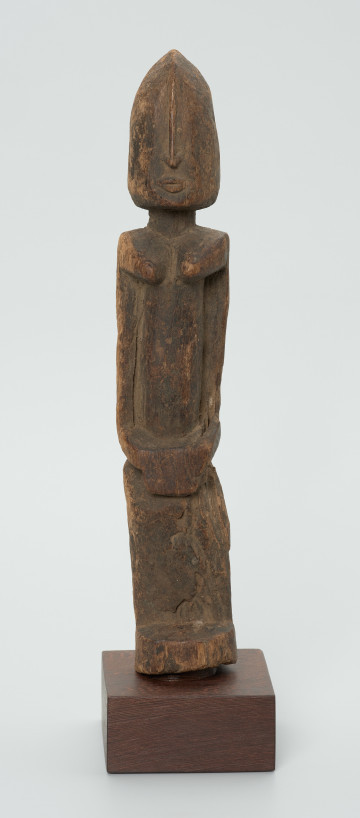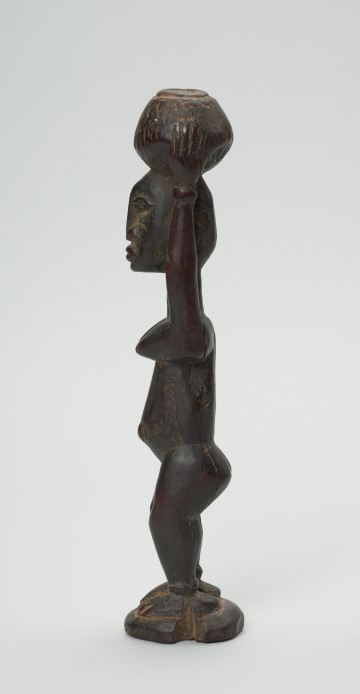
Figure - woman
między 1951 — 2000
National Museum in Szczecin
Part of the collection: Collection of Dogonian art
The Dogon are people living in the south-central part of the Republic of Mali. Its number is estimated at 500-600 thousand. The largest concentration of their villages is located on a 150 km stretch along the Bandiagara Escarpment. The villages are located on the massif, on the plain spreading around it and on the so-called debris, i.e. stony slopes and ravines located at its foot. The world of the Dogon women is little explored. Everything that is known about it comes from information obtained from men, as they always answer on behalf of their wives and daughters. They themselves are reluctant to talk about their lives and duties, always explaining that they have a lot of work to do. The Dogon men, considering the attitude of the young women and their character traits, distinguish three types among them: yanw peju, yanw enren and yanw kokoju. The first - yanw peju - are compared to sheep. According to men, they are not endowed with much brains, but they know their duties, are fertile, devoted to children and family. They perform well as wives and mothers. The women called yanw enren resemble goats according to the Dogon. They are intelligent, but according to the men, too free and curious about the world. They respect customs, are responsible, but know their own value and would not hesitate to leave their husbands if they found him to be an irresponsible father of the family. They also know the art of manipulating men and when they want to they can be sweet and seductive. For that reason, the Dogon consider them dangerous. Women belonging to the yanw kokoju group are like snakes. They often have a wonderful physical condition and move beautifully, which attracts many admirers, but they are the source of many conflicts and, aware of their charms, use them to seduce and deceive men.
Ewa Prądzyńska
Author / creator
Dimensions
cały obiekt: height: 25 cm, width: 7 cm
Object type
figure
Creation time / dating
Creation / finding place
Identification number
Location / status

między 1951 — 2000
National Museum in Szczecin

między 1951 — 2000
National Museum in Szczecin

między 1951 — 2000
National Museum in Szczecin
DISCOVER this TOPIC
National Museum in Lublin
DISCOVER this PATH
Educational path